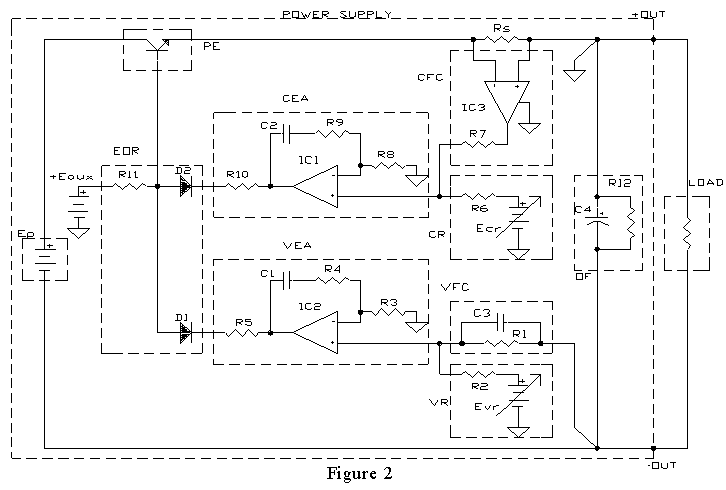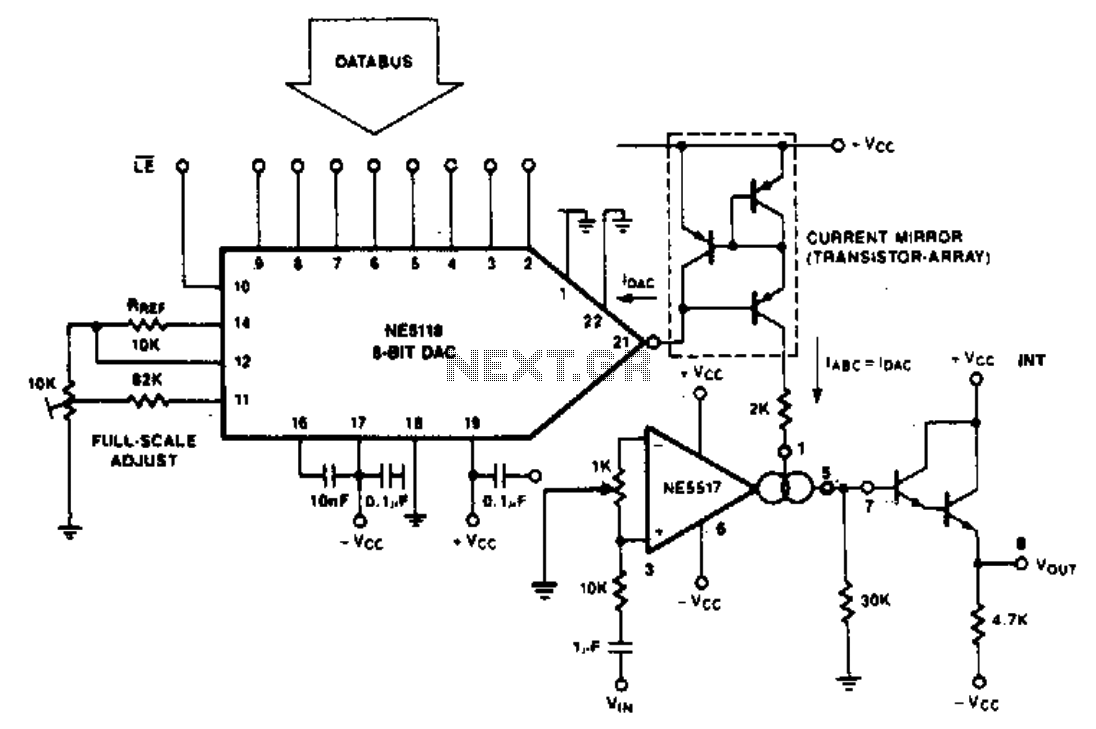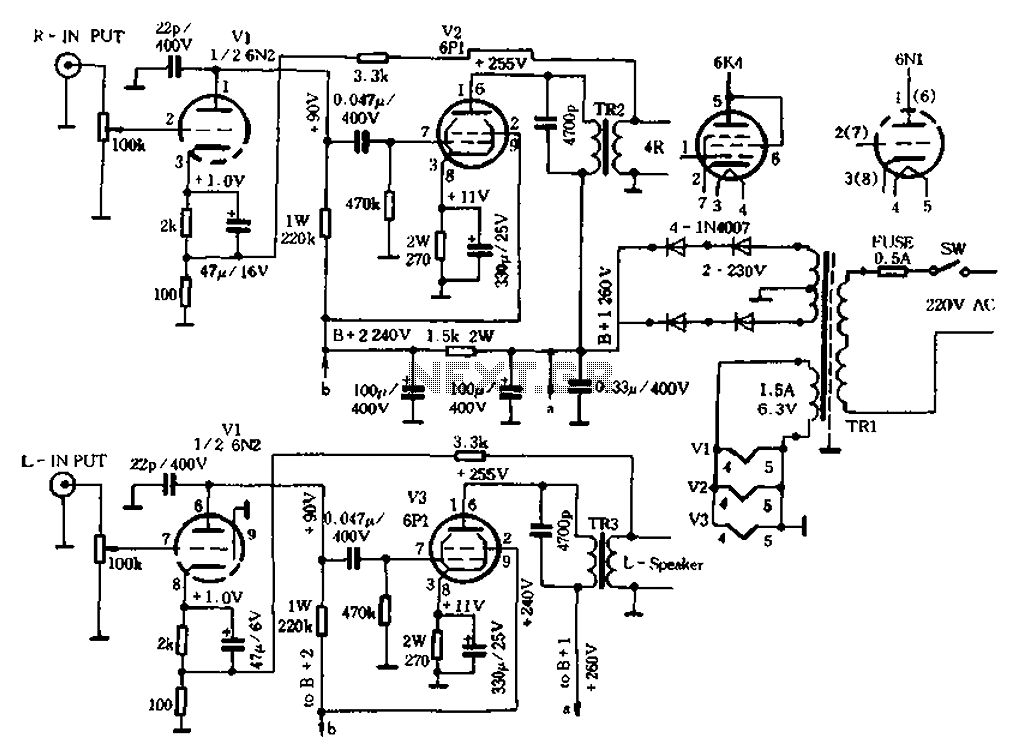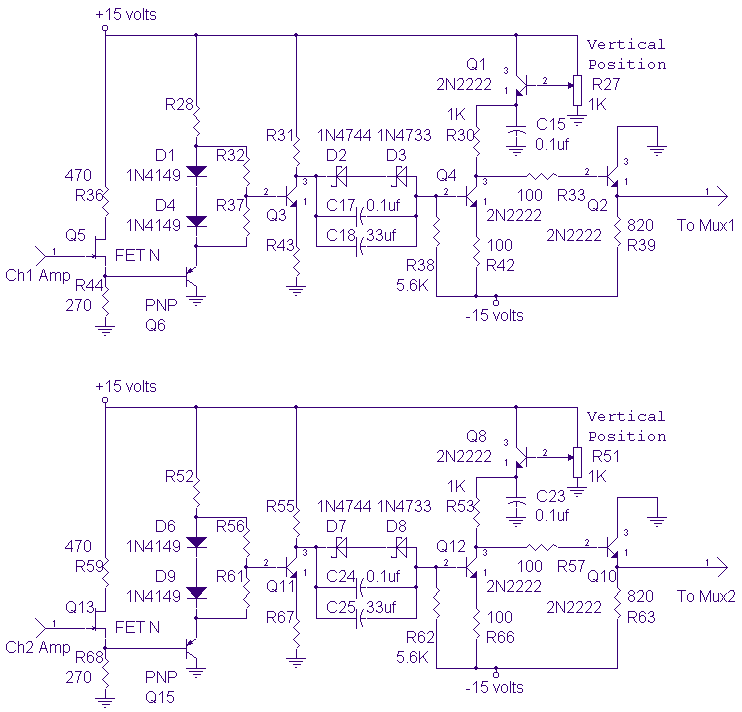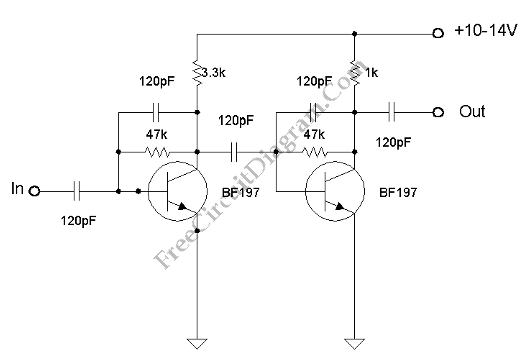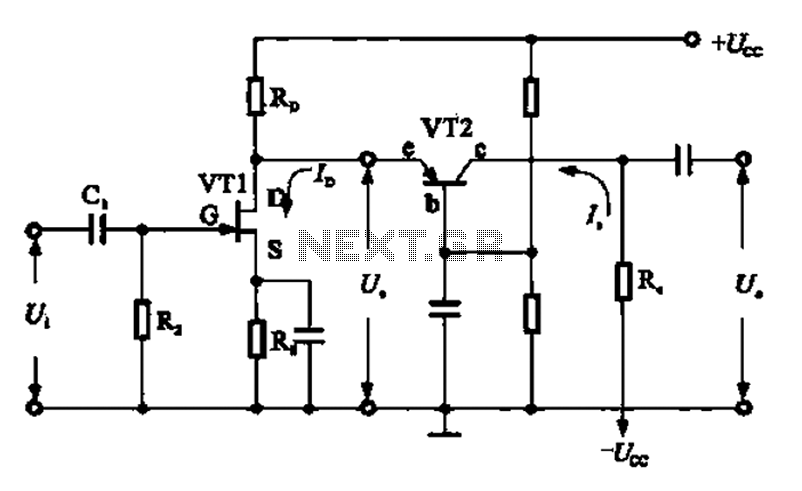
TDA2050V HiFi amplifier
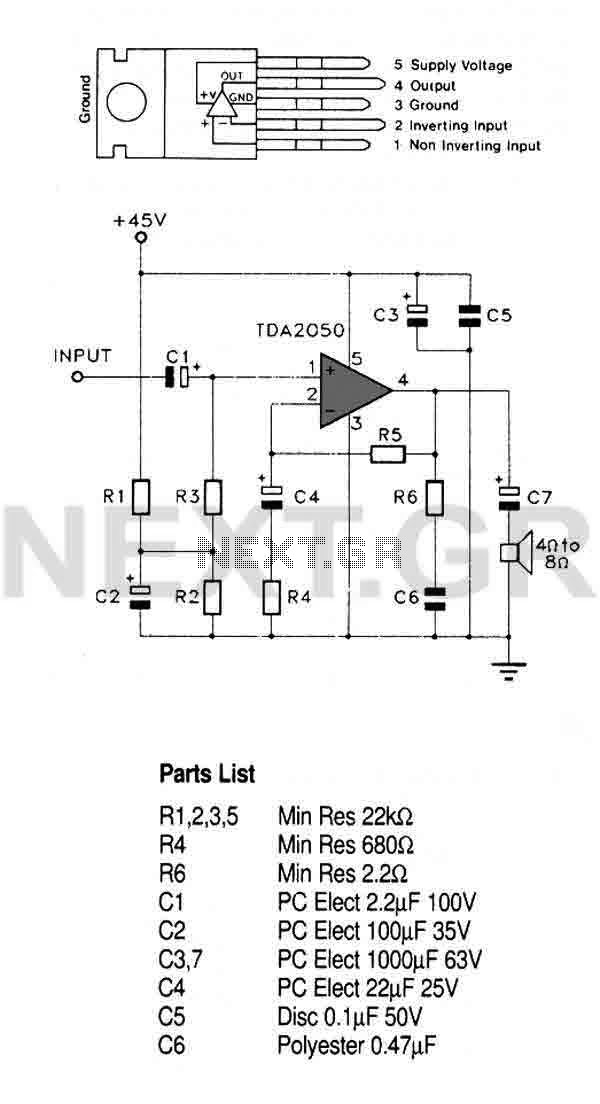
This circuit utilizes a high-quality audio amplifier integrated circuit (IC) housed in a 5-pin TO220 package, which eliminates the need for insulating washers between the metal tab and heatsink in single rail supply applications. The amplifier is capable of delivering 32 watts RMS into a 4-ohm load and 25 watts RMS into an 8-ohm load. Additionally, the circuit is designed to exhibit low harmonic and crossover distortion, along with a minimal external component count.
The audio amplifier circuit is engineered for optimal performance in audio applications, particularly where space and efficiency are critical. The choice of a 5-pin TO220 package facilitates effective thermal management due to its robust construction, allowing for direct mounting on a heatsink without additional insulation, thus simplifying the assembly process.
The amplifier's output capabilities make it suitable for driving various audio loads, ensuring high-quality sound reproduction. The 32 watts RMS output into a 4-ohm load indicates its ability to deliver substantial power, making it appropriate for use in mid-range speaker systems, while the 25 watts RMS output into an 8-ohm load provides versatility for different speaker configurations.
The low harmonic and crossover distortion characteristics of the circuit are essential for maintaining audio fidelity, making it ideal for high-fidelity audio applications. This is particularly beneficial in scenarios where clarity and precision are paramount, such as in home theater systems or professional audio equipment.
Moreover, the low external component count not only reduces the overall complexity of the circuit but also enhances reliability and minimizes potential points of failure. This design approach allows for a more compact layout, which is advantageous in modern electronic devices where space is limited.
In summary, this audio amplifier circuit represents a practical and efficient solution for high-quality audio amplification, combining robust performance with ease of integration into various audio systems.This circuit uses a high quality audio amplifier IC in a 5-pin TO220 package that does not require insulating washers between the metal tab and heatsink in single rail supply applications. The amp can provide 32 watt rms into 4ohm load and 25 watt rms into 8ohm. The circuit features low harmonic and crossover distortion and a low external component count.
The audio amplifier circuit is engineered for optimal performance in audio applications, particularly where space and efficiency are critical. The choice of a 5-pin TO220 package facilitates effective thermal management due to its robust construction, allowing for direct mounting on a heatsink without additional insulation, thus simplifying the assembly process.
The amplifier's output capabilities make it suitable for driving various audio loads, ensuring high-quality sound reproduction. The 32 watts RMS output into a 4-ohm load indicates its ability to deliver substantial power, making it appropriate for use in mid-range speaker systems, while the 25 watts RMS output into an 8-ohm load provides versatility for different speaker configurations.
The low harmonic and crossover distortion characteristics of the circuit are essential for maintaining audio fidelity, making it ideal for high-fidelity audio applications. This is particularly beneficial in scenarios where clarity and precision are paramount, such as in home theater systems or professional audio equipment.
Moreover, the low external component count not only reduces the overall complexity of the circuit but also enhances reliability and minimizes potential points of failure. This design approach allows for a more compact layout, which is advantageous in modern electronic devices where space is limited.
In summary, this audio amplifier circuit represents a practical and efficient solution for high-quality audio amplification, combining robust performance with ease of integration into various audio systems.This circuit uses a high quality audio amplifier IC in a 5-pin TO220 package that does not require insulating washers between the metal tab and heatsink in single rail supply applications. The amp can provide 32 watt rms into 4ohm load and 25 watt rms into 8ohm. The circuit features low harmonic and crossover distortion and a low external component count.
